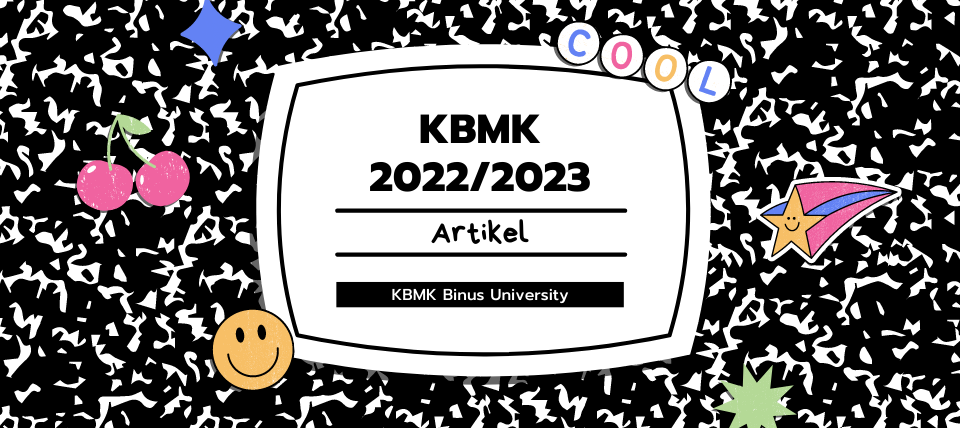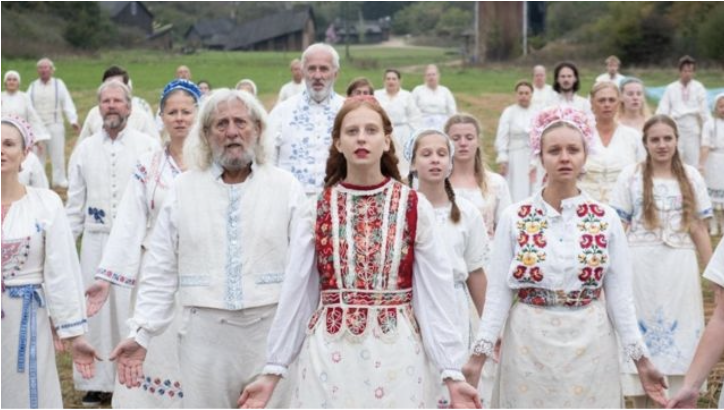
ARTICLE
HOW HORROR MOVIES SEND SHIVERS DOWN YOUR SPINE
By BINUS English Club (BNEC) • October 16, 2022
Share to your friends:
View Original ArticleHow Horror Movies Send Shivers Down Your Spine
Have you watched The Nun? A Quiet Place? Hereditary? Or probably something thrilling like Bird Box and Paranormal Activity? We are certain that you might have probably watched at least one horror movie in your lifetime, but have you wondered how these movies actually create a scene so suspenseful that gets your heart beats faster, signaling one of your neurons to be more aware of what’s about to come, and boo! You just got jump scared!
In this article, we are about to disclose how horror movie gives a sense that keeps you on the edge of your seat. According to a study, there are actually four types of suspense, those are:
- Direct suspense, when we see what’s in the film in the first person.
- Shared suspense, when we are encouraged to empathize with the characters.
- Vicarious suspense, when we witness that the character is in danger, but the character doesn’t.
- Composite suspense, when all of the direct, shared, and vicarious suspense got combined.
To begin, we need to know the word ‘suspense’ comes from the verb ‘to suspend’, in which we can essentially learn that it is supposed to mean ‘hold something back’. A suspense scene means that we know something is about to happen, but we have no idea when or how it’s gonna happen. The tension created will catch the viewer’s attention, keep us wanting more, and keep us waiting to see what happens next.
 Suspense scene from the movie ‘Don’t Breathe’ (2016)
Suspense scene from the movie ‘Don’t Breathe’ (2016)
In horror movies, the suspense created isn’t only from the image. The written script or verbally communicated words, the sets including the lighting, the music, or the sound can also create a sense of something we either would like to wait for or just… hoping in despair that we don’t get to experience it.
According to StudioBinder, a good set can help in building suspense. In horror movies especially, visuals are highly dependent on the production design. It can start with color theory in films; horror movies usually use grainy, faded, and old vintage-ish color that gives you discomfort.
However, as you noticed, the film Midsommar (2019) by Ari Aster still gives off a creepy sense despite being colorful and bright. Aster uses a lot of symbolism in the movies and plays with so many stress levels, for instance (oops, spoiler alert!) when the group of people acts like a single unit despite being many, giving the viewers uncomfortable and not-so-common energy.
This way, we can see that Aster debunks the stereotype that horror movies are often associated with darkness and disastrous events. If you would like to see and analyze more about horror movies: its technique, music, soundtrack, and more about how exactly horror movies create suspense and have that ability to tingle your spine, you might want to watch The Ring – especially as The Ring is one of the scariest horror movies (according to StudioBinder). Next time you watch horror movies, be sure to analyze further to get yourself more at ease instead of jumping scared!
References
Brooke-Nottingham, Lindsay. (2015). This Kind of Suspense Makes Horror Movies Scary. Extracted from Futuritiy: https://www.futurity.org/horror-movies-960542/ [Accessed September 28th, 2022]
Dunham, Brent. (2020). Elements of Suspense – Building Suspense with Film Technique. Extracted from StudioBinder: https://www.studiobinder.com/blog/elements-of-suspense/ [Accessed September 28th, 2022]
McCullagh, John Francis. (2018). Filmmaking 101: Creating Tension and Suspense in a Sequence. Extracted from The Beat: https://www.premiumbeat.com/blog/filmmaking-tips-creating-tension-suspense/ [Accessed September 28th, 2022]
Share to your friends:
View Original ArticleMore Articles

ARTICLE BINUS English Club (BNEC) • April 30, 2022
WHAT’S THE BEST WAY FOR COLLEGE STUDENTS TO MANAGE MONEY?

ARTICLE BINUS English Club (BNEC) • July 18, 2022
SCHOLARSHIP INFORMATION

ARTICLE BINUS English Club (BNEC) • November 16, 2022
5 TIPS TO SPEED UP LEARNING PROCESS FOR SLOW LEARNERS

ARTICLE BINUS English Club (BNEC) • August 20, 2023
Be A Hero and Gain Profits Through Recycling

ARTICLE BINUS English Club (BNEC) • May 2, 2022
TIPS & TRICK TO COPE WITH STRESS IN COLLEGE

NEWS Architecture - Faculty of Engineering • June 3, 2022
Sustainability: The New Aesthetic Order

NEWS Keluarga Mahasiswa Katolik (KMK) • February 28, 2022
BENCHMARKING KMK 2021

ARTICLE Chinese Literature - Faculty of Humanities • February 20, 2023
Pengumuman Nilai Sidang Proposal Semester Genap 2022-2023

ARTICLE Keluarga Besar Mahasiswa Khonghucu (KBMK) • May 31, 2022
FESTIVAL PERAHU NAGA

VIDEO BINUS TV • May 27, 2023
